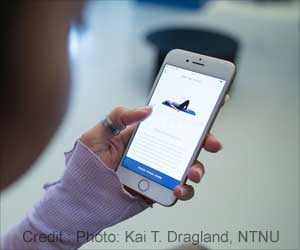Are you tired of traveling? Traveling for too long can wreak havoc on your body. Here are a few travel tips that can help you keep backaches and pains at bay. Bon Voyage!

TOP INSIGHT
Are you tired of traveling? Traveling for too long can wreak havoc on your body. However, warming up before getting into a car or on a plane, and cooling down once you reach your destination can help you keep backaches and pains at bay. Bon Voyage!
Read More..
To enjoy your journey, ACA offers the following tips to alleviate some of the common aches and pains associated with travel:
First Things First: Warm Up, Cool Down
Treat travel like an athletic event. Warm up before getting into a car or on a plane, and cool down once you reach your destination. One of the easiest ways do this is by taking a brisk walk to stretch your hamstring and calf muscles. Once you’re on the road or in the air, try some additional moves to keep your blood flowing and joints flexible:
Tips for Air Travel
- Stand up straight and feel the normal “S” curve of your spine. Then use rolled-up pillows or blankets to maintain that curve when you sit in your seat. Tuck a pillow behind your back and just above the beltline and lay another pillow across the gap between your neck and the headrest. If the seat is hollowed from wear, use folded blankets to raise your buttocks a little.
- Check all bags heavier than 5 to 10 percent of your body weight. Overhead lifting of any significant amount of weight should be avoided to reduce the risk of pain in the lower back or neck. While lifting your bags, stand right in front of the overhead compartment, so the spine is not rotated. Do not lift your bags over your head or turn or twist your head and neck in the process.
- When stowing belongings under the seat, do not force the object with an awkward motion using your legs, feet or arms. This may cause muscle strain or spasms in the upper thighs and lower back muscles. Instead, sit in your seat first, and using your hands and feet, gently guide your bags under the seat directly in front of you.
- While seated, vary your position occasionally to improve circulation and avoid leg cramps. Massage legs and calves. Bring your legs in and move your knees up and down. Prop your legs up on a book or a bag under your seat.
- Do not sit directly under the air controls. A draft can increase tension in neck and shoulder muscles.
Tips for Car Travel
- Adjust the seat, so you are as close to the steering wheel as comfortably possible. Your knees should be slightly higher than your hips. Place four fingers behind the back of your thigh closest to your knee. If you cannot easily slide your fingers in and out of that space, you need to re-adjust your seat.
- Consider a back support. Using a support may reduce the incidence of low back strain and pain. The widest part of the support should be between the bottom of your rib cage and your waistline.
- Exercise your legs while driving to reduce the risk of any swelling, fatigue, or discomfort. Open your toes as wide as you can, and count to 10. Count to five while you tighten your calf muscles, then your thigh muscles, then your gluteal muscles. Roll your shoulders forward and back, making sure to keep your hands on the steering wheel and your eyes on the road.
- To minimize arm and hand tension while driving, hold the steering wheel at approximately 2 o’clock and 7 o’clock, periodically switching to 10 o’clock and 5 o’clock.
- Do not grip the steering wheel. Instead, tighten and loosen your grip to improve hand circulation and decrease muscle fatigue in the arms, wrists and hands.
- While always being careful to keep your eyes on the road, vary your focal point while driving to reduce the risk of eye fatigue and tension headaches.
- Take rest breaks. Never underestimate the potential consequences of fatigue to yourself, your passengers and other drivers.
“If you follow these simple tips, you can enjoy pain-free, safe travel,” says Dr. Bautch. “If you do experience pain and stress on your back, doctors of chiropractic are trained and licensed to diagnose and treat problems of the spine and nervous system.”
 MEDINDIA
MEDINDIA




 Email
Email







